A few days ago, I visited the Temple of Heaven, on what was actually a pretty nice day (and there have been few of those). The air and sky were reasonably clear, and there was a bit of a breeze so it didn't feel as hot.
The Emperor, known as the Son of Heaven, lived in the Forbidden City, which is huge, but he dared not build his own dwelling larger than the one dedicated to the worship of Heaven. So, the Temple of Heaven is actually larger than the Forbidden City, although much of the enclosed grounds are park land (beautifully filled with pines, cypress, and junipers that are as much as 800 years old).
This building is the Hall of Prayer for Good Harvest, and you can see the scale of it by comparing it to the people along the base. Note the vibrant colors (an indication of its importance, or simply an indication that it has been more recently restored?)
As in the Forbidden City, the Temple of Heaven is organized along a north/south meridian. The design of the grounds is such that the enclosing northern wall is round (symbolizing heaven), while the southern wall is square (symbolizing the earth). The northern section is also higher in elevation than the southern section (as heaven is higher than the earth).
This is the Red Stairway Bridge which runs 360m along the north/south line. It is 30m wide and 4m high (with underpasses joining the east and west parklands).
The Temple of Heaven is the most holy of the Beijing Imperial Temples, and is the place where the Emperor would come each year on the winter solstice to offer a sacrifice to heaven. In comparing these photos, to those of the Forbidden City, you might notice that the roofs of Imperial buildings are always yellow, while the roofs of Temples are always blue.
This is the Imperial Vault of Heaven, a place where ceremonial stone tablets were stored. Located south of the Hall of Prayer for Good Harvest, along the Red Stairway Bridge. (As a favour to you all, I am skipping the gates that provide access to these Halls, as I figure we'd seen enough at the Forbidden City).
Further to south, we encounter the Circular Mound Altar, a place where sacrifices were made. (Not sure yet if they were animal or human, as I have read descriptions of both).
These are the three main points of interest within the Temple grounds, but there are many other buildings, and acres of park land. In the morning, many people gather in the parks to do Tai Chi, or play music, or simply to have family picnics.
Friday, August 15, 2008
Subscribe to:
Post Comments (Atom)
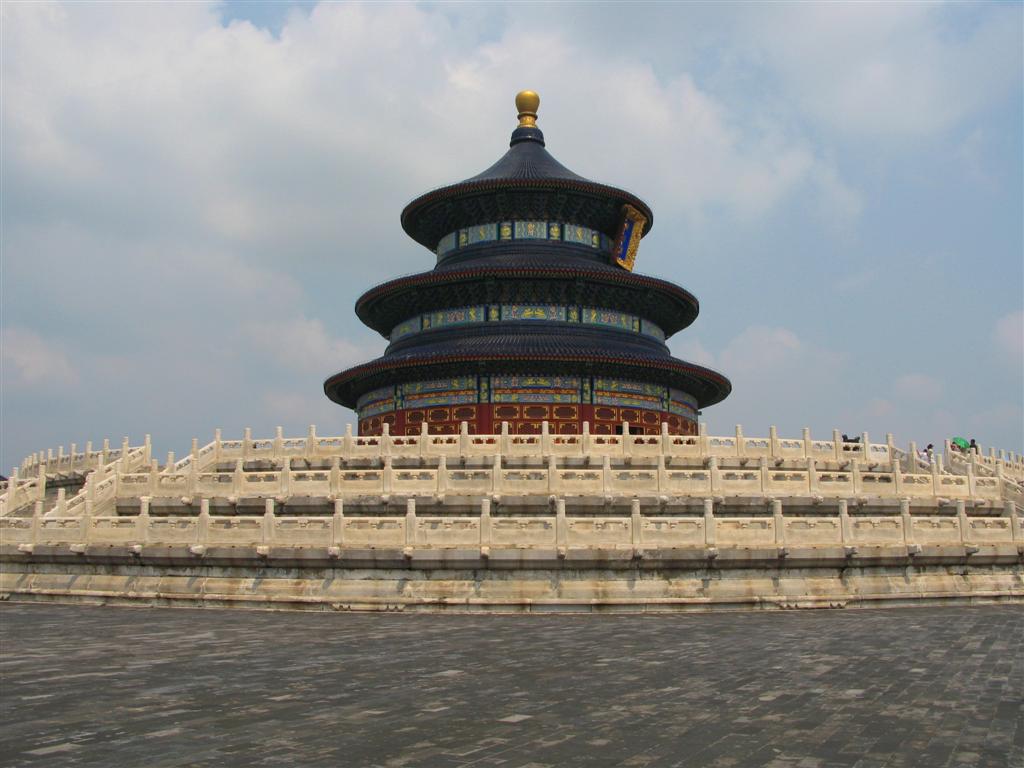
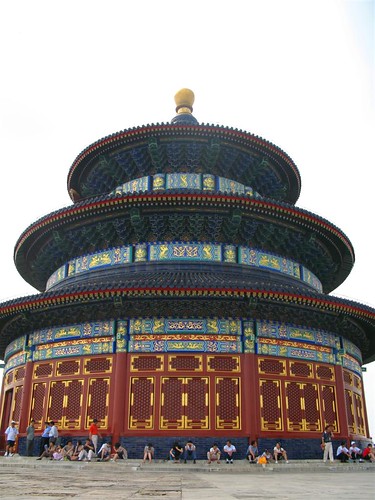

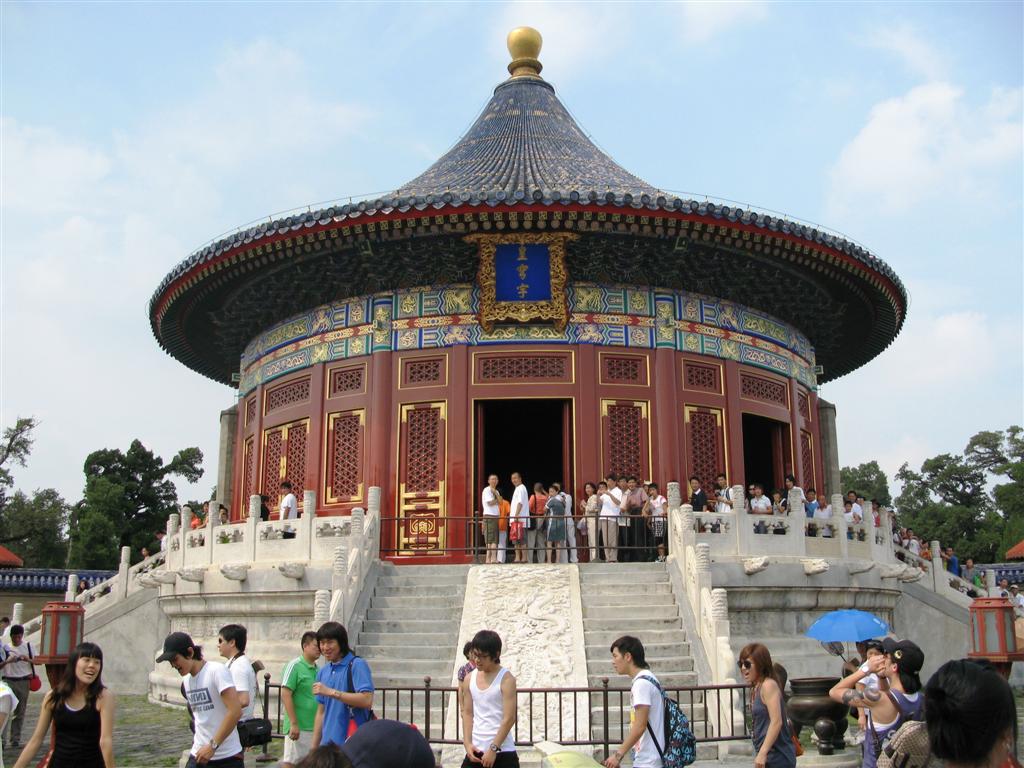
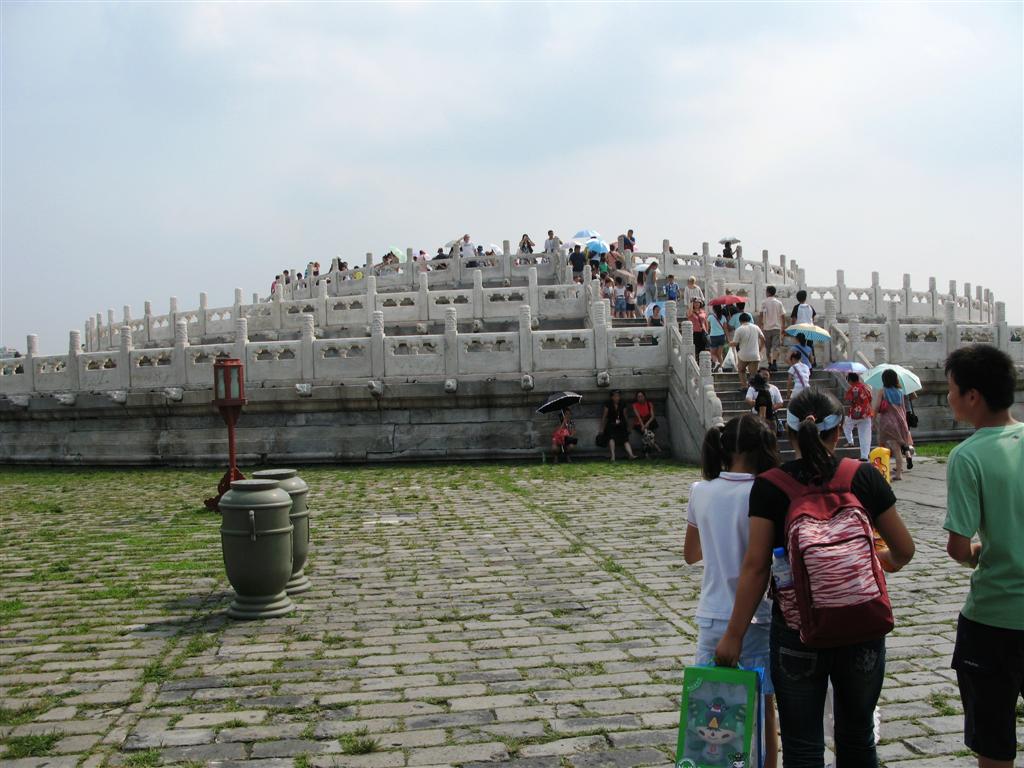
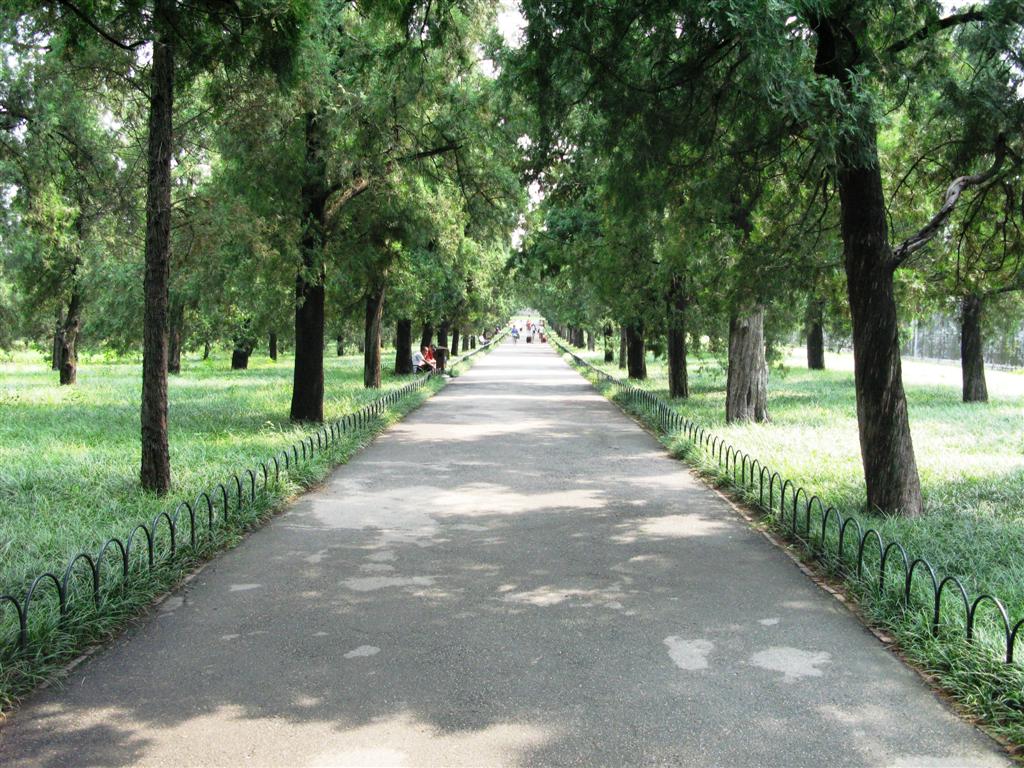





1 comment:
I thought you were in Beijing not Walt Disney World!!!LOL!
China's real temple is much bigger than the one at WDW.
Lovely pictures!
Alicia =0)
Post a Comment